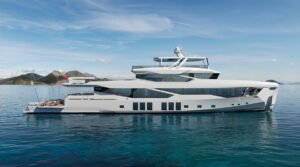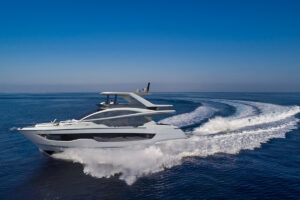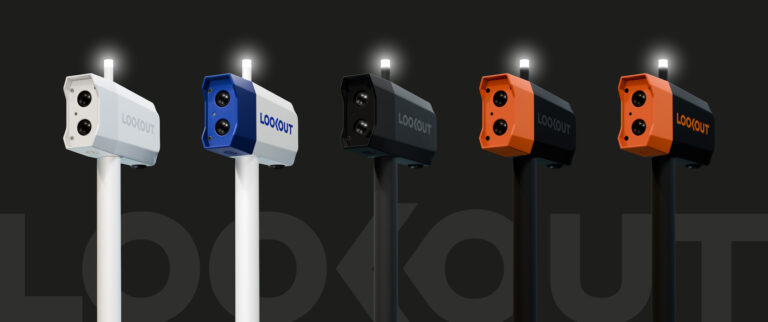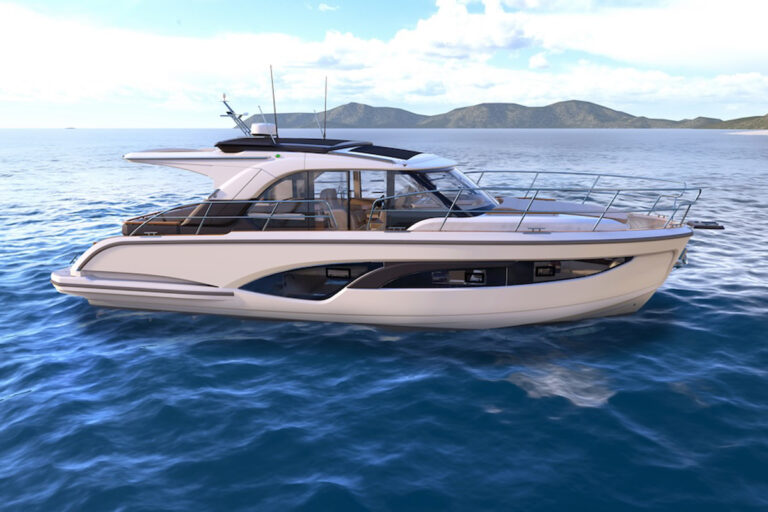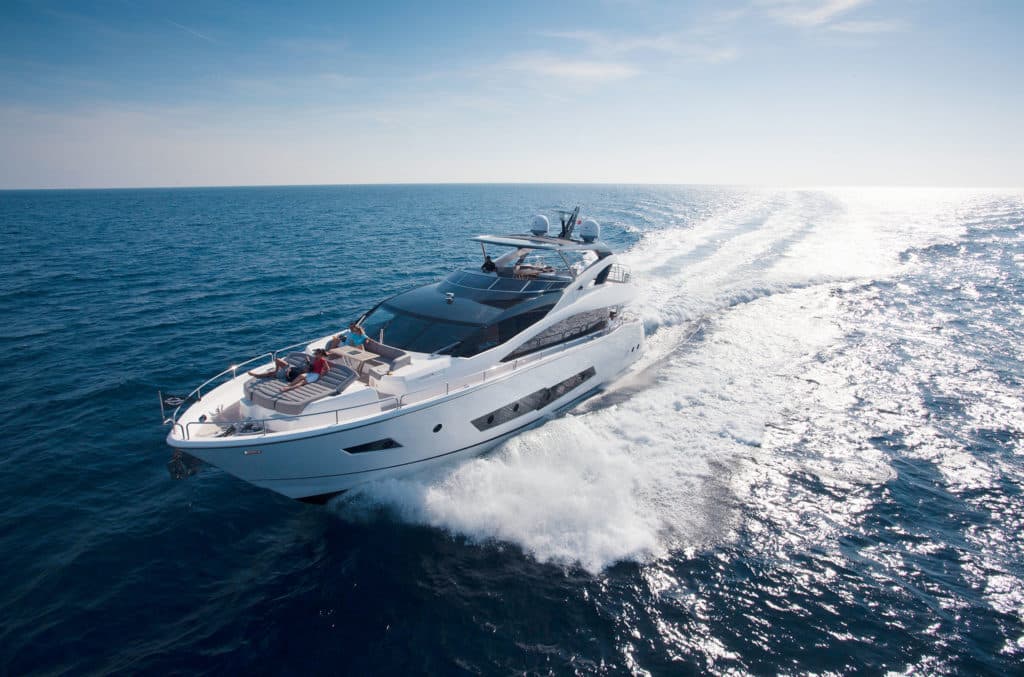

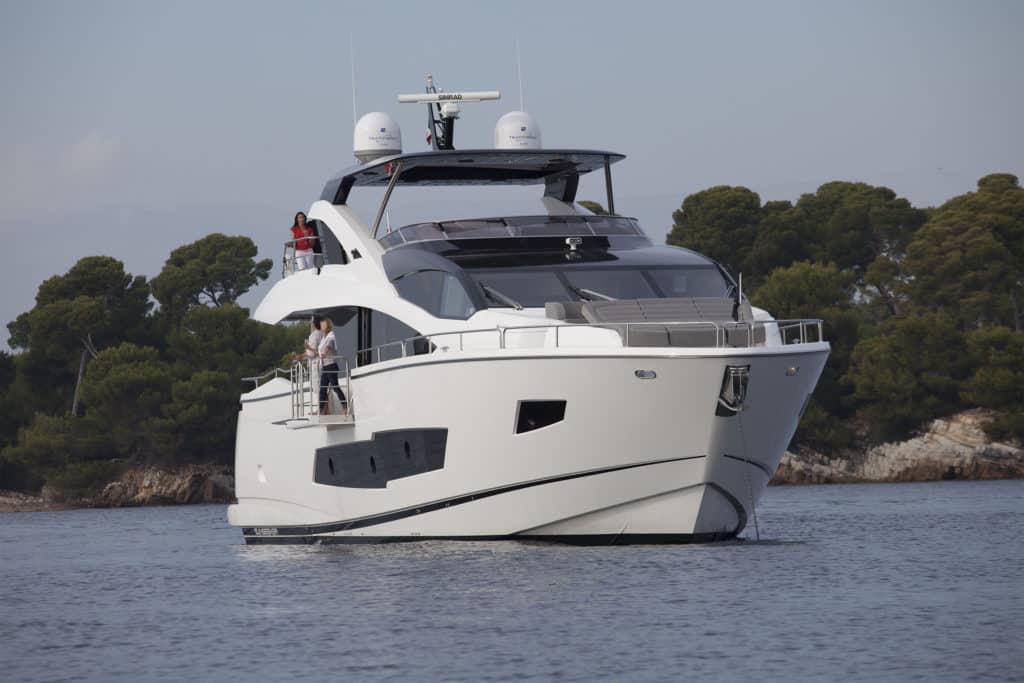

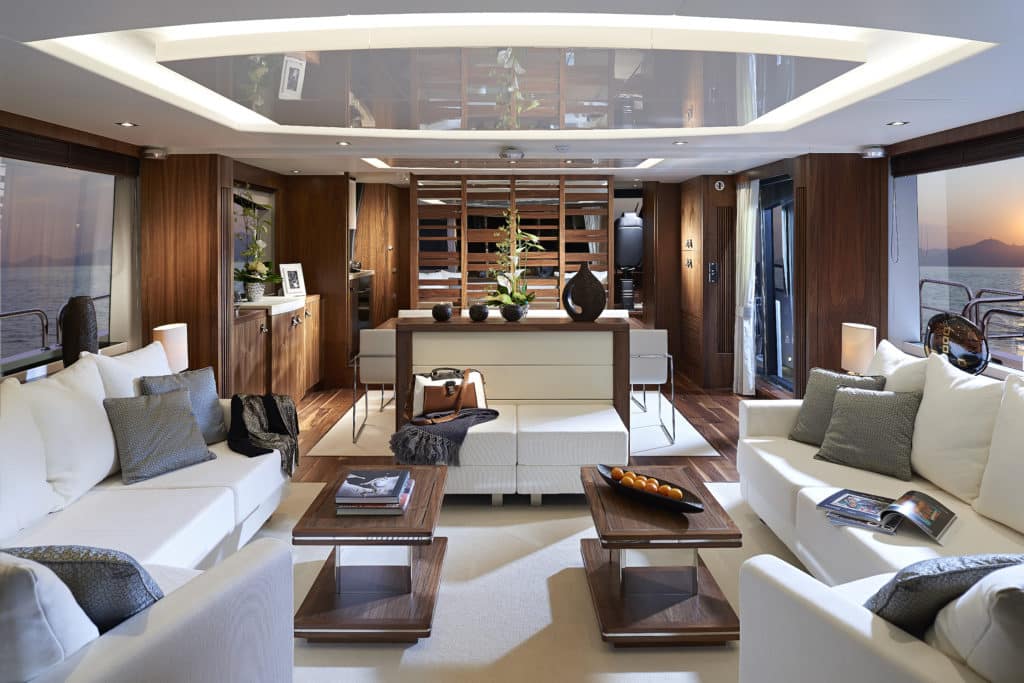
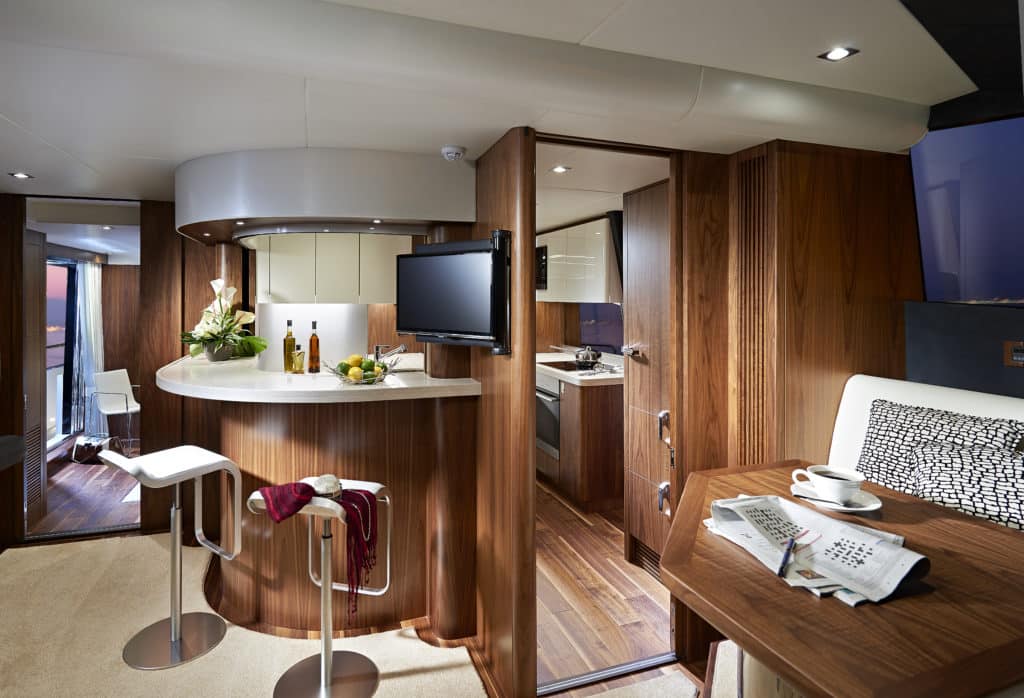
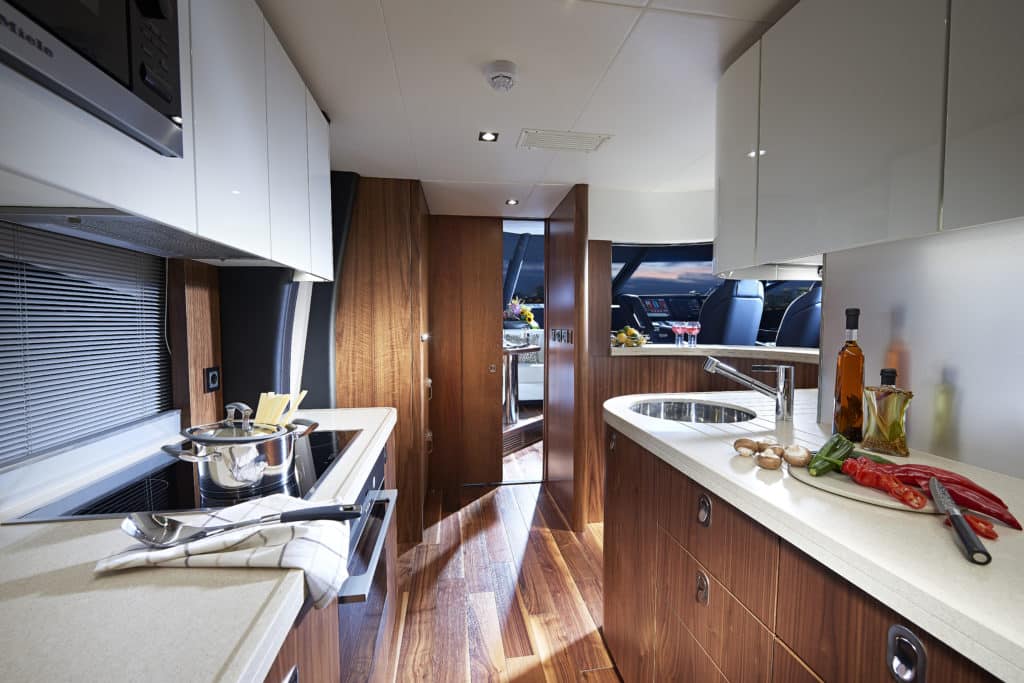
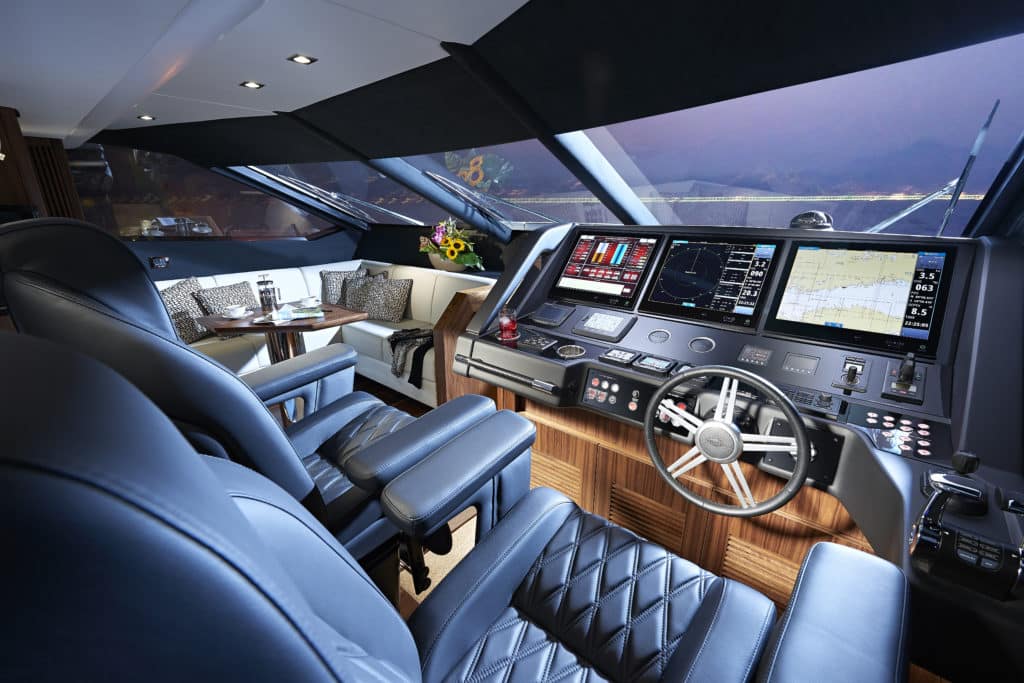
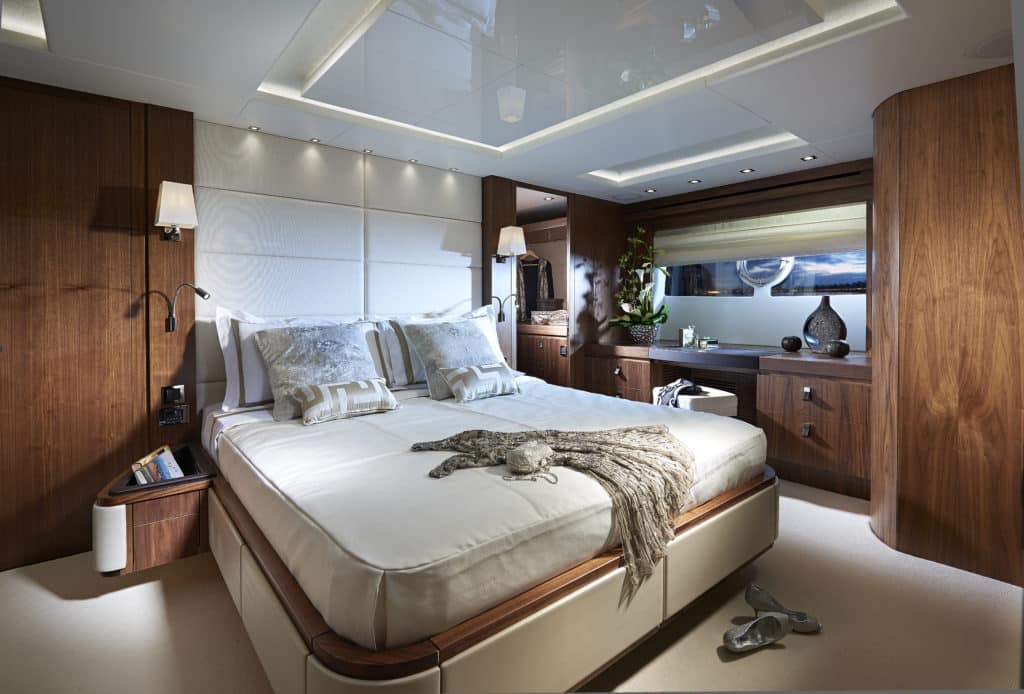
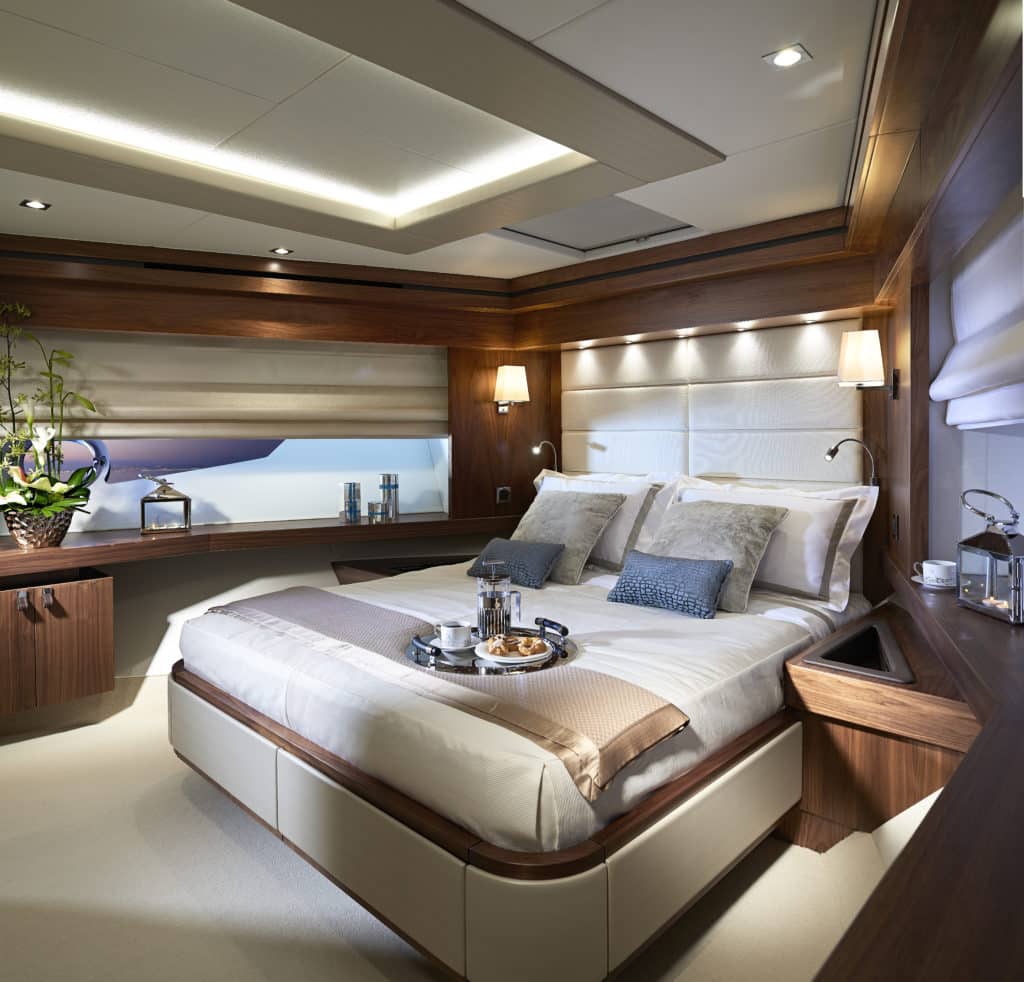


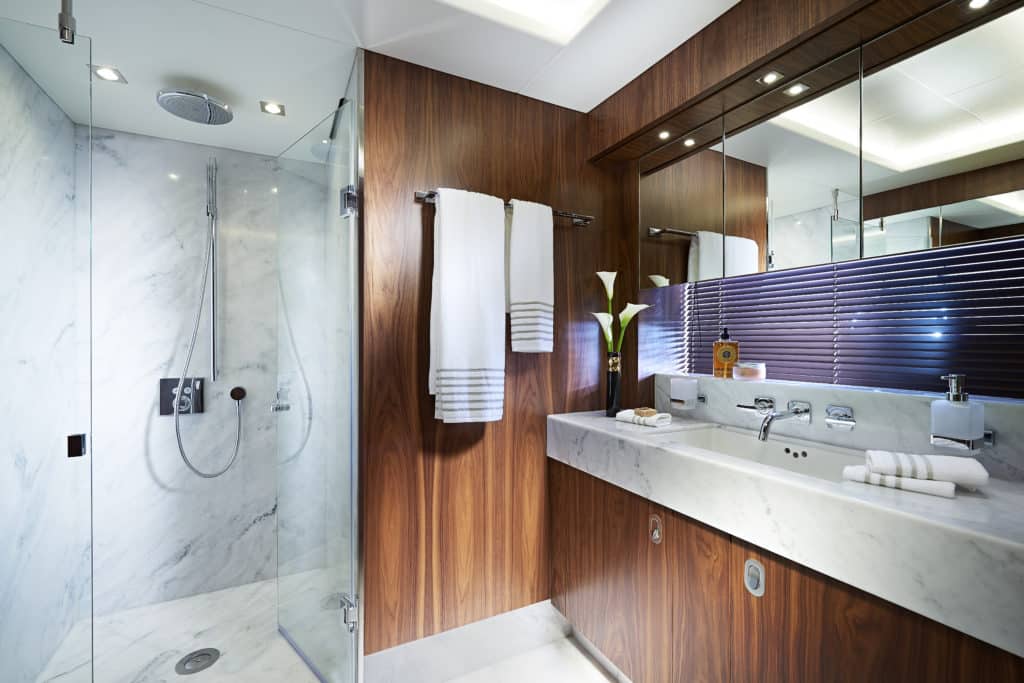
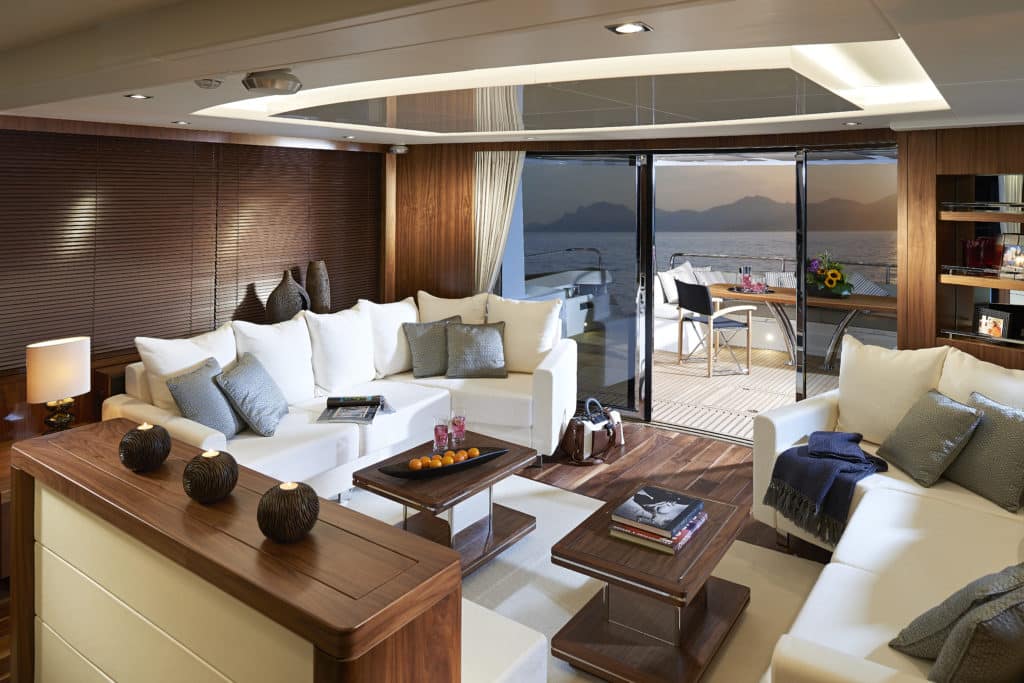

The drive from my Suffolk home on England’s east coast to Sunseeker, which is based in Poole, Dorset, on the southwest coast, is four hours minimum without activating any speed cameras. (And there are lots in this part of the world.) At 8 o’clock on a mid-October morning at Sunseeker House, hot coffee and a bacon roll restored a suitable enthusiasm for the day, as did an unexpected break later in the heavy, dark clouds that the short-range shipping forecast had suggested were going to be particularly nasty. In the end we enjoyed Indian summer sunshine for the duration of our morning with the builder’s 86 Yacht. And while my morning had been fairly ordinary, this Sunseeker proved herself completely the opposite.
Never mind the unarguably bold, and to me quite stunning, profile that’s pure contemporary Sunseeker; the really interesting bit lies beneath the vessel’s waterline. Sunseeker designed the 86 Yacht from the keel up to deliver serious cruising flexibility. Conceived by the builder’s longstanding in-house naval architect Ewen Foster, this yacht’s hull form is a hybrid. It can deliver the usual Sunseeker planing speeds, but it’s a little bit deeper in the forefoot and a little flatter aft, which helps deliver more efficient displacement and semidisplacement performance. The transom deadrise is 17 degrees. By comparison, the 88 Yacht she replaces in the Sunseeker lineup had a transom deadrise of 20 degrees.
The hull is produced by a two-part mold that was created in-house from a two-part milled plug. This split-mold approach has nothing to do with performance, but is more to do with yard practicalities when it comes to moving the tooling around. Unlike many other builders, Sunseeker still bangs the wet layup drum. None of its hulls and superstructures are vacuum-infused, despite the advantages and successes — including lightness, strength and increased efficiency — competitors have had with such techniques. Sunseeker says it prefers its method to avoid printthrough issues in the vessel’s gelcoat finish.
Specifying the engines for a hull like this is a crucial decision. Four engine options, all MTUs, are available: twin 1,380-horsepower 10V2000 M84s or twin 1,659-horsepower 12V2000 M84s, both of which are derated, or twin high-performance 1,622-horsepower 10V2000 M94s or 1,950- horsepower 12V2000 M94s. However, it is also worth mentioning that all of the aforementioned engines will soon be replaced by versions that comply with the latest EPA Tier 3 and IMO Tier II requirements with in-engine technology, and IMO Tier III requirements using SCR exhaust-gas after-treatment. Whatever the engine designation, the selection should depend on your cruising requirements, not top-speed vanities.
With the more powerful M94 ratings, the topspeed options are 27 knots with the 10Vs (which is what Hull No. 2, our test boat, had) and 31 knots with the larger 12Vs. But that’s not the interesting call. There is little difference in high-speed cruising ranges — 488 nautical miles at 2,200 rpm and 22 knots, or 468 nm at 2,200 rpm and 26 knots — the range does vary significantly at slow-speed cruising speeds. It is 1,430 nm at 1,200 rpm and 10.4 knots for the 10Vs; 1,188 nm at 1,200 rpm and 12 knots for the 12Vs. If you slow down a bit, she will make 1,753 nm at 1,000 rpm and 8.5 knots or 1,456 nm at 1,000 rpm and 10 knots, respectively. Long-range cruising enthusiasts will surely appreciate the 86 Yacht’s performance versatility.
With the derated diesels, the top speeds of 10Vs and 12Vs are 24 knots and 27 knots, respectively. At 10 knots, the 10Vs are spinning at 1,000 rpm and the range is around 1,450 nm with a total fuel burn, including generators, of just over 18 gallons per hour. At a virtually identical 10-knot cruise and 1,000 rpm, the 12Vs burn nearer 19 gph and deliver a 1,380 nm range. Those are long legs.
Slow-speed cruising is the real luxury with this yacht. During our test on that semiblustery autumn morning, our 86 delivered the predicted 26-knot top speed and was suitably agile for a lady of 147,400 pounds half-load displacement, but the best bit was the cruise home at just 10 knots. I was at the helm all the way back to the yard from the outer reaches of Poole Bay, at least 10 to 15 nm at 10 knots, and had time to appreciate the scenery, not least Brownsea Castle, which lies a mile from the yard and serves as one of the world’s most obvious landmarks just inside the entrance to Poole Harbour. This channel winds to the north with trot lines along the way and the sun on riverside hills, fields and some of the envy- provoking waterside properties around the exclusive Sandbanks area of Poole. The spot is probably as close as England gets to having its own Fort Lauderdale — not very close, but still pretty posh. That hour-and-a-half cruise was bliss. I would have been happy with another 1,400 nm or so like that.
The base price of a Sunseeker 86 Yacht with the biggest 12V engines is just under 3.9 million pounds (about $6 million at press time), whether spec’d with the M84s or M94s. But specify the least powerful 10Vs, and again either the derated M84s or M94s, and the basic price drops to a whisker under 3.6 million pounds (about $5.6 million at press time). Then, once all the usual options are totaled up, expect to see another 10 percent or so more added to the final bill, excluding taxes; that’s the average that extras cost.
One recent client pushed options about as far as imaginable with a production yacht. The fourth and fifth 86 Yachts will be based in the Seychelles. One will serve as a support vessel for the owner’s two 230-plus-foot megayachts. The other will be a dive boat with the main salon certified as a wet deck and an editing suite aboard to process underwater video.
During our test in mid-October, little more than a month after the 86 premiered at overlapping boat shows in France and the United Kingdom, 19 had already been sold, totaling 18 months’ worth of orders and delivery slots now pushing into early 2016. All of those are “Euro-spec” boats, although bound for various regions of the world.
Ironically, despite all the sound arguments for derated engines and displacement and semidisplacement cruising speeds — all of which Sunseeker flagged as desirable in market research and focus groups — all the boats sold thus far are contracted with high- performance M94s. As the saying goes, “You can lead horses to water, but you can’t make them drink.”
| Specifications | Manufacturer Supplied Numbers |
|---|---|
| CLASSIFICATION | CE (Cat B) / MCA <24m |
| LENGTH OVERALL | 86’ 3” – 26.30m |
| LENGTH HULL | 78’ 7” – 23.95m |
| BEAM – (MAXIMUM) | 21’ 3” – 6.47m |
| DRAFT – (@ FULL LOAD INCL. PROPS) | 6’ 5” – 1.95m |
| DISPLACEMENT – (@ HALF LOAD) | 147,400lb – 67,000kg |
| FUEL CAPACITY | 2,907 US gal. – 11,000 litres |
| FRESH WATER CAPACITY | 370 US gal. – 1,400 litres |
| BLACK WATER CAPACITY | 115 US gal. – 435 litres |
| GENERATORS – STANDARD | 2 x 25kW @ 50Hz 230v single phase (Euro) 2 x 28kW @ 60Hz 120v single phase (US) |
| PROPULSION | Twin fixed-pitch propellers |
| MAXIMUM SPEED | up to 30 knots* |
| CRUISING SPEED | up to 24 knots* |
| RANGE @ 10 KNOTS | 1,000 + nautical miles* |


